#highland archaeology
Explore tagged Tumblr posts
Text
Tarradale Excavations 2024: Making sense of the wall

View On WordPress
#archaeology Muir of Ord#barns#boundar wall#boundary wall#cobbling#creamware#David Aitken#DigIt#fire-pit#highland archaeology#kiln#kiln bowl#medieval pottery#North of Scotland Archaeological Society#photogrammetry#Post Medieval archaeology#Tarradale Archaeological Team#Tarradale distillery#Tarradale House#Tarradale Through Time#Vernacular buildings#wall core
0 notes
Text
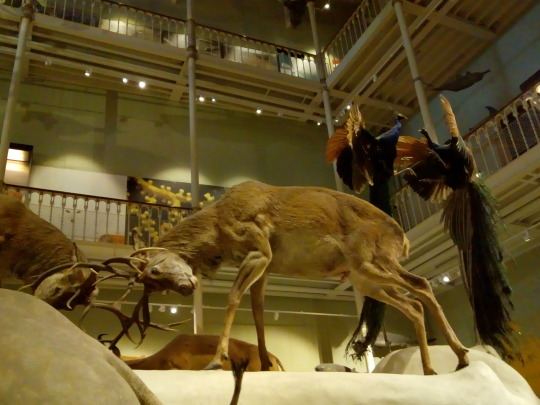
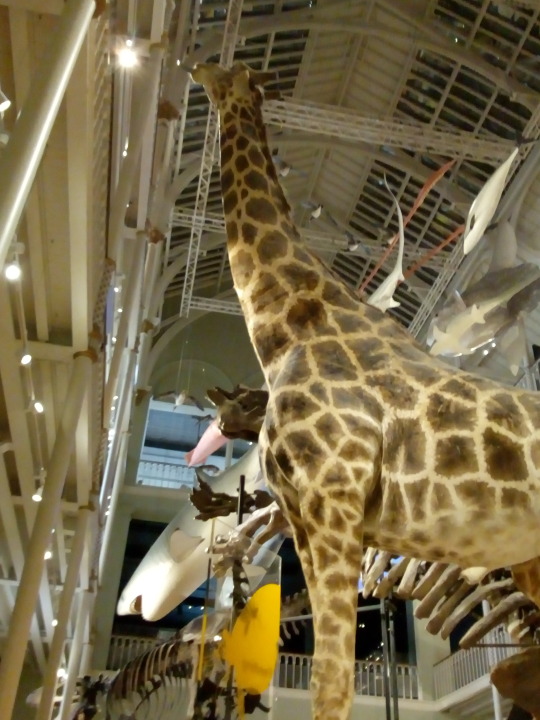
𝙀𝘿𝙄𝙉𝘽𝙐𝙍𝙂𝙃
#edinburgh#edinburgh museum#ancient history#architecture#archaeology#photography#photoshoot#aesthetics#history#art#scottish highlands#scottish#scotland#nature photography#nature#animals#giraffe#deer#classical art#aestethic#moodboard#photographer#photo
11 notes
·
View notes
Video
Cairns at Balnuaran of Clava in 1996 par Historic Environment Scotland Via Flickr : Balnuaran of Clava is the site of an exceptionally well preserved group of prehistoric burial cairns that were built about 4,000 years ago. The Bronze Age cemetery complex comprises passage graves, ring cairns, a kerb cairn, standing stones and the remains of a chapel. This view shows the centre and south west cairns taken with a Hi-spy, a camera attached to an extendable pole to capture the whole site in one photograph. Photographer: RCAHMS Image reference: SC357547 See more images of Balnuaran of Clava: canmore.rcahms.gov.uk/en/search/?keyword=Balnuaran+of+Clava © RCAHMS
#scotland#canmore#rcahms#archaeology#stone circle#cairn#ring cairn#Balnuaran of Clava#Clava Cairn#chambered cairn#Balnuaran#Balnuarin#Bronze#Age#cemetery#Highland#Inverness-shire#Croy and Dalcross#green#grey#gray#circle#stone#ring#landscape#prehistoric#burial cairn#SC357547#1996#flickr
0 notes
Text
Part 4 (and final) of my analysis on the ruins in Windwail Highland
1 note
·
View note
Note
I generally cannot think of any Azerbaijan history of them having a kingdom that was this big or even having a kingdom at all. The propaganda is so strong within the Azerbaijan education system; it is wild. I even remember getting into arguments explaining Armenians have more traces to a lot of Azerbaijan land than the Turkic Azeri groups.
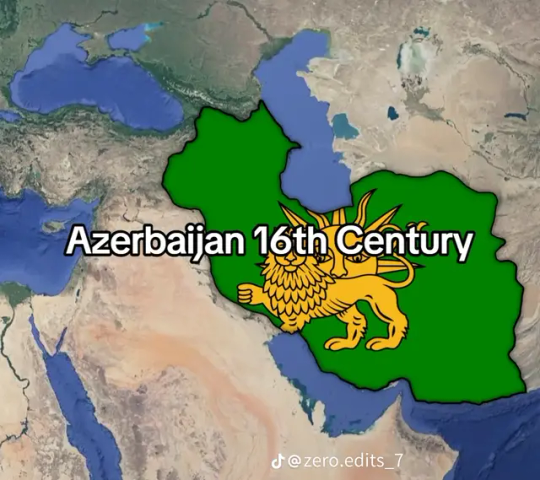
did you know that in their textbooks it is stated that Columbus had discovered America thanks to azeris?

Armenians are indigenous to the Armenian Highlands (marked orange), as archaeological evidence and historical records trace our presence back thousands of years. Historically, this area is known as the cradle of Armenian civilization and has been home to the Armenian people for millennia. The Armenian Highlands were the heartland of the ancient Kingdom of Urartu and later the Armenian Kingdoms. In contrast, the turkic tribes, arrived in the region much later during the Seljuk and Mongol invasions. Thus, the turkic presence in the South Caucasus is relatively recent compared to the ancient and continuous Armenian habitation of the Armenian Highlands. This explains the traces of Armenian presence and influence in the lands that are now part of modern-day azerbaijan and turkey.
*cue the genocidal threats and remarks by turks and azeris in the replies
71 notes
·
View notes
Photo

Ethnicity & Identity Within the Four-Room House
The process of determining ethnicity is a problematic venture, even more so when interpreted through the archaeological record. Despite this issue, evidence, such as the four-room house, has been preserved that can be interpreted to represent ethnic markers and help illuminate the lives of individuals and groups from the past. Following the theoretical perspective of Fredrik Barth, ethnicity is understood to be a malleable and self-ascribed phenomenon within a particular group. In light of this, the artifacts found within the archaeological record have the ability to illustrate how a particular group identified itself and how it perpetuated this identity. I propose to demonstrate this act of self-ascription and perpetuation of ethnic identity through an examination of ancient “Israelite” architecture, namely four-room houses during the Iron I and Iron II periods of the central highlands. This analysis will include an interpretation of the structure, function, and origin of the four-room house, as well as a cross examination with biblical passages suggesting possible Egyptian parallels as well as an egalitarian lifestyle.
Determining Ethnicity
The definition and interpretation of ethnicity has evolved over the last century and new methods and perspectives have been adopted. This shift occurred in the late 1960s with the work of Fredrik Barth. Barth sparked this evolution with the hypothesis that ethnicity is malleable, can vary, be learnt, and change. Prior to this interpretation, theorists such as Durkheim and Weber understood ethnicity to be static, an understanding that continued until the late 1960s CE. According to Barth, ethnic groups are a form of social organization that is constructed in response to self-ascription and the ascription of others. In other words, an ethnic identity is formed through a group's understanding of itself as an ethnic group, as well as how others outside the group understand them. This self-understanding is accomplished through self-identification, a process that often includes a conscious construction of identity by the group. This may be influenced by factors such as individual psychology, relationships, family, community, nation, and so on. Geoff Emberling argues that the process of self-ascription is likely the most “fundamental characteristic of ethnicity,” stressing common genealogy and cultural construction as key factors.
If an ethnic group is not simply determined according to genetic relatedness then other determinative factors must be considered; these include, but are not limited to: language, religion, cuisine, clothing, household objects, and architecture. For the purposes of this paper, however, architectural remains will take precedence over the other factors simply due to the focus on four-room houses and the identification of ethnicity through architecture.
Returning to the process of self-ascription, Elizabeth Bloch-Smith begs the following questions: what shared interest forged the bond of Iron I Israel, and what shared institutions perpetuated group identity? Contrary to her analysis of the subject, I suggest the development and use of the four-room house as a possible solution to both questions. The four-room house represented more than a simple domestic dwelling type; it represented ideological and ethnic behaviours that were expected and required by those that utilized it. Granted, biblical sources appear to omit the significance of house plans, but this is not to say that significance was totally absent. Biblical sources represent one resource; they are not the ultimate judges of fact, and they most certainly do not represent the most historically accurate source; however, Bloch-Smith's critique does bring attention to the issue of incorporating biblical archaeology with biblical scholarship. Although the two depend on one another to a certain degree, the process is far from simple.
As Emberling notes, the issue for the archaeologist determining ethnicity is the identification of objects and characteristics that were socially meaningful. As the debate among scholars suggests, uniform consensus is far from existent in the interpretation of the four-room house as an ethnic marker and the same can be said for other determinative factors. This issue of interpretation is addressed by Ziony Zevit who argues for a greater attempt toward objectivity in scholarship, particularly within biblical studies and biblical archaeology. Essentially, Zevit stresses the impact of one's worldview upon his or her behaviour. A student or scholar of the past must recognize her own preconceived worldview in order to bracket out such standards that may be incompatible with the subject of study. In other words, it is problematic for an individual of the 21st century to differentiate between what was, and was not, meaningful in antiquity, and it is quite possibly this process that creates debate among scholars in this subject area. With this in mind, however, one may proceed to interpret the archaeological evidence while simultaneously taking the problematic nature and consciously bracketing one's own worldview into consideration.
In light of this discussion, a definition for ethnicity has yet to be provided in order to clarify my purpose. Eloquently put, Norman K. Gottwald describes the term ethnicity as “a clearly articulated shared identity within a population group, attested by claims of common history, culture, and values.” In response to this definition, the term ethnicity will be utilized here in reference to the group identity that has been constructed by the group in response to ecological, political, socio-economical, and/or religious factors. It is also in relation to their collective memory and collective identity as understood by itself and by those outside the group. Basically, ethnicity is to be understood as consciously constructed rather than merely biological inherited, and is not only self-ascribed but ascribed by others.
The group in question here, namely the early Israelites, provides an interesting case for the interpretation of ethnic identity. Although the origins of the Israelites in Canaan are not the focus of this paper, it is important to note the ambiguity of their arrival to the region as well as the largely contested interpretation among scholars. Popular theories include the pre-existence of Israelites in Canaan, suggesting that the material evidence does not support the arrival of a new semi-nomadic people; this is in contrast to the alternate theory in which the influx of rural settlements during the early Iron I period is interpreted to represent the arrival of a new cultural or ethnic group. Not wanting to give preference to one theory over another, I propose a more intermediate solution.
As the end of the Bronze Age and late 13th century BCE represented a turbulent time throughout the ancient Mediterranean world, it is entirely possible that a variety of peoples settled in the central highlands of Canaan. William G. Dever suggests a similar argument in that the “Proto-Israelites” were not homogeneous from the beginning. Instead, the members of this group may have included displaced Canaanites, urban refugees, migrant farmers, Shasu-like Bedouin, and so on. Assuming this was the case, over time a unified group and ideologies would have developed in response to a new self-awareness as has been the case in other similar situations. This seems like a highly plausible situation, especially considering the socio-economic situation during this period such as the destruction and abandonment of various Canaanite urban centers and the possibility that various groups (not exclusive to the displaced urban dwelling Canaanites) may have chosen to settle in the highlands. Not only does this situation seem reasonable, but it seems ridiculous to assume only one group either chose or were permitted to settle in this area, especially due to its adaptability to subsistence farming. However the Israelites arrived in the central highlands, it is the representation of newly found ideologies and self-awareness that is most important to this discussion and it is through the analysis of the four-room house that these constructs can be interpreted.
Continue reading...
25 notes
·
View notes
Text
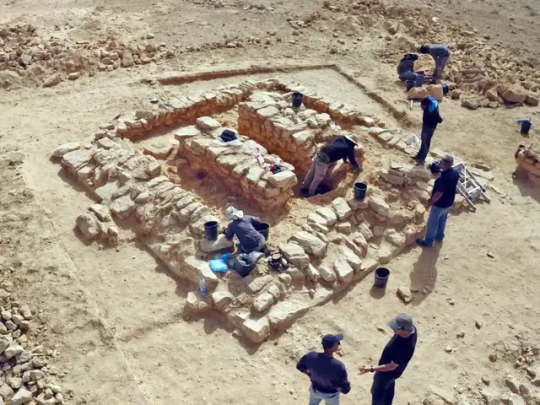
2,500-Year-Old Tombs With Artifacts Discovered in Israel
Archaeologists have uncovered ancient tombs and artifacts near Tlalim Junction, Israel, revealing trade connections between the region and distant civilizations, including Yemen, Phoenicia, and Egypt. The discovery sheds new light on the movement of goods and cultural exchanges across the ancient world.
Details of the artifacts
Excavations led by the Israel Antiquities Authority (IAA) unearthed artifacts pointing to the area’s role in long-distance commerce. Among the findings were flint arrowheads, likely sourced from Yemen and Oman, as well as copper and silver jewelry.
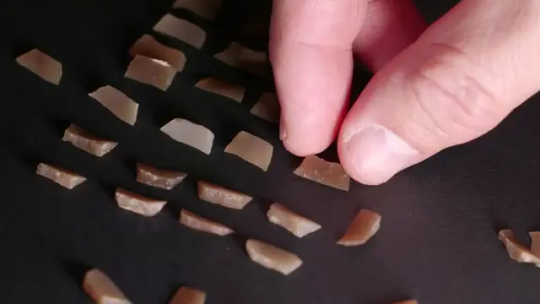
Researchers also discovered small alabaster vessels, which were historically used to transport incense. One of the most striking objects was an amulet of Bes, the Egyptian deity known for protection and fertility.
A forgotten hub of trade and culture
Archaeologists suggest the Negev Highlands played a far more important role than previously thought. Rather than serving as a mere passageway for traders, the area may have functioned as a central hub where goods, ideas, and traditions were exchanged among civilizations.
The location of the tombs is unusual. Unlike most burial sites found near ancient towns or fortresses, these graves are isolated in a remote area with no nearby settlements.
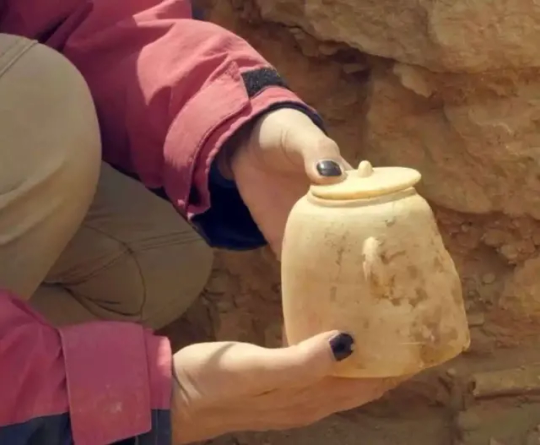
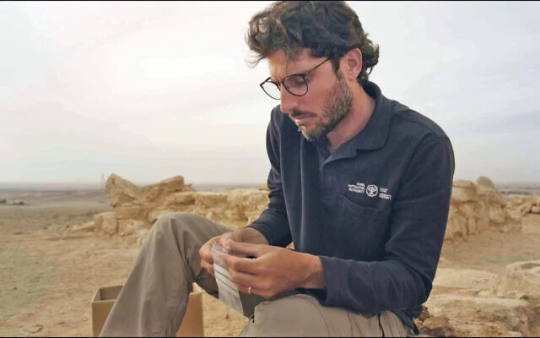
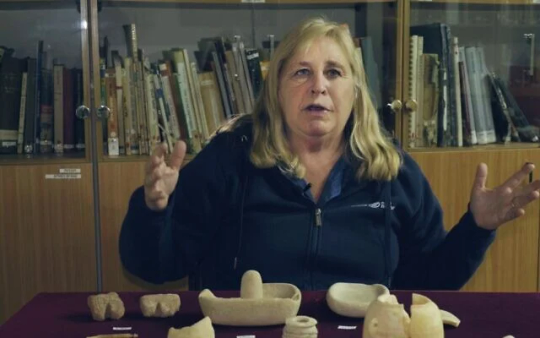
Researchers have proposed two possible explanations: the site may have served as a designated burial ground for traveling merchants, or it could be a mass grave for traders who perished in an attack.
Dr. Jacob Vardi, an expert on ancient tools at the IAA said, “The unique concentration of flint artifacts uncovered at the site are unparalleled in Israel, and the only source that we know of is Yemen and Oman.”
Echoes of a distant past
Historical records suggest that trade caravans passing through the Negev carried luxury goods such as frankincense and myrrh, prized for their use in religious rituals and medicine.
Some accounts also suggest that the same trade routes may have been used for human trafficking, with enslaved women taken from Gaza, Egypt, Greece, Moab, and Edom.
Another intriguing aspect of the discovery is the presence of red ochre on some of the flint artifacts. This natural pigment was commonly used in ancient cultures, symbolizing blood, and played a role in religious or decorative practices.
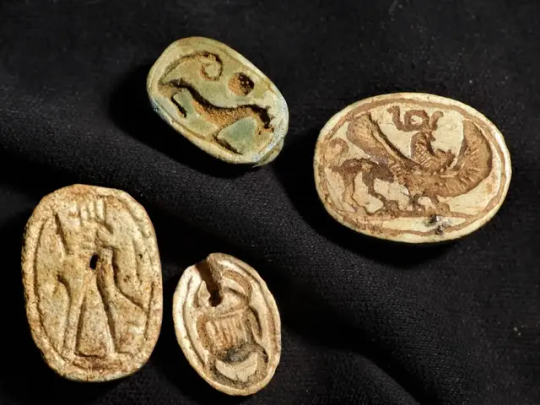
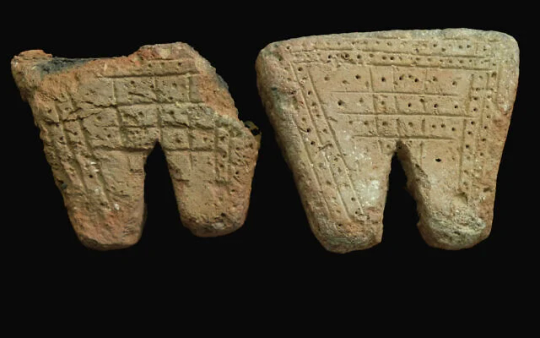
Dr. Vardi speculated that the ochre-covered arrowheads may have had ceremonial or symbolic value, rather than being used solely as weapons.
Public unveiling of the findings
These discoveries of tombs and artifacts in Israel will be presented to the public for the first time in the upcoming lecture series “Archaeological Mysteries.” Experts from the Israel Antiquities Authority will lead discussions on the significance of the excavation.
The series will take place at the Jay and Jeanie Schottenstein National Campus for the Archaeology of Israel and will provide deeper insight into the region’s historical role in trade and cultural exchange.
Researchers continue to piece together the vast and complex network of ancient trade with each discovery. The findings from the Negev Highlands highlight the region’s connection to civilizations far beyond its borders, offering a glimpse into the lives of the traders who once journeyed through these lands.
By Nisha Zahid.
#2500-Year-Old Tombs With Artifacts Discovered in Israel#Tlalim Junction Israel#ancient tombs#ancient graves#grave goods#ancient artifacts#archeology#archeolgst#history#history news#ancient history#ancient culture#ancient civilizations
23 notes
·
View notes
Note
Top 5 archaeological sites in Australia that you feel people should know more about? Or top 5 Australian artefacts?
I feel like I’ve talked a bit about artefacts in a few recent asks, and also I feel like a lot of Australian archaeology (and as such, sites) are very underrated, particularly on a global scale. Its often acknowledged in Australian archaeology that getting international academia to recognise the importance of our country’s archaeology is very very difficult.
While there’s a million and one sites I’d love to talk about, I’m going to TRY and give sites that relate to different aspects and locations
This is probably going to be long, so...
1. Nauwalabila, Madjedbebe (Malakunanja II), and the Deaf Adder Gorge region, Northern Territory (Aboriginal)
Rock shelters in this region, and specifically Madjedbebe, are currently the oldest location of human habitation in Australia. Dating evidence from 2017 excavations provided an estimate of earliest occupation of 50 000 years at certainty, possibly extending back as early as 65 000 (+/-6000). It also has provided a lot of evidence for research into the extensive grind stone technologies of the Pleistocene.
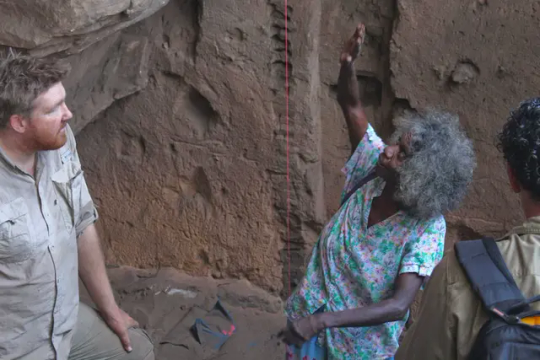
2. Cloggs Cave and the Buchan region of the Victorian Gippsland (Aboriginal)
So much research has been done into this region in various ways. Josephine Flood focused her research on Bogong Moth usage (and festivals) within this region, providing some of the earliest accepted academic research in support of Aboriginal peoples’ claims of large scale Bogong Moth Festivals in Australia’s highlands (although the fac that no one really believed communities until then…………..). In 2021 grind analysis found Bogong Moth residue, making this the earliest stone artefact with evidence of insect food remains. And in addition to that recent 2017 research in the area investigated Holocene occupation with Aboriginal community members, with a focus on understanding the interaction of spirituality with the resources found in the caves.
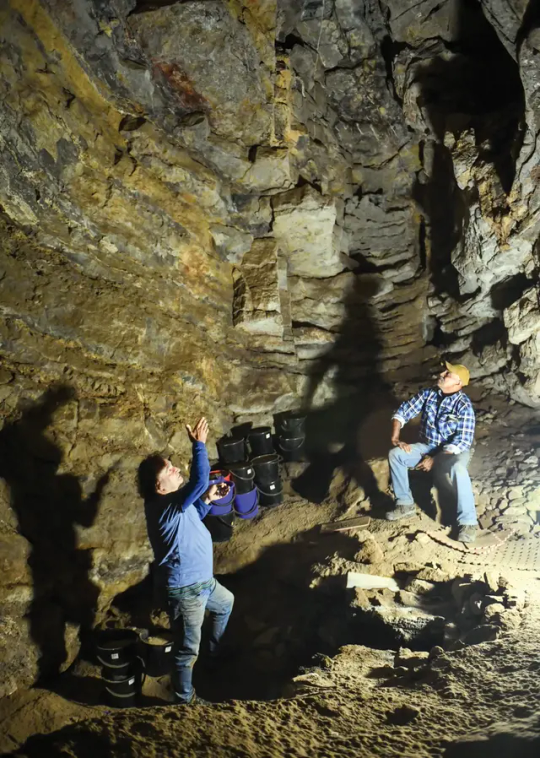
3. Mabuyag Island, Torres Strait Islands, Queensland (Torres Strait Islander)
Mabuyag Island (alternatively known as Mabuiag or Mabuyaagi) has archaeological evidence of human occupation since 7300 years ago. The island is both associated with recent religious practices associated with he heavy processing of dugong remains, and totemic associations with these, which played a role in early 2000s into community lead and directed archaeological research into ritual and religious traditions and practices. In addition to this, Mabuyag is the location of the first archaeological excavations in Australia to find pre-colonial pottery fragments. The fragments at the two sites on the island were associated with Melanesian and Papua New Guinean pottery trade. The excavations relating to pottery on the island played an important role in our understanding of domestic and international trade in pre-colonial Australia, and also formed an influence for the recent excavations at Lizard Island, 300km south, which identified the first datable domestically made pottery technology found in Australia.
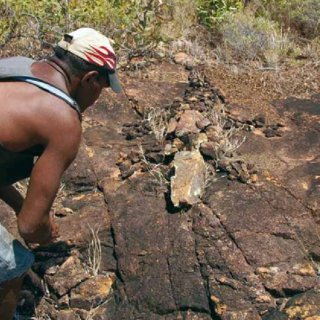
4. Hyde Park Barracks, Sydney, NSW
Hyde Park Barracks is part of a collection of colonial heritage structures in Australia, relating to Australia’s time as a penal settlement. Hyde Park Barracks in particular were the location of the housing of convict men from 1819 to 1830, with the 1830s to 1840s also involving the site being a location of additional convict punishment, and the base for the Board of Assignment of Servants. Following on from a reduction of convicts to NSW in the 1840s, the Barracks became the Female Immigration Depot, and the Orphan Institution, later becoming the Asylum for Infirm and Destitute Women.
This time period of women’s occupation provides some of the most interesting archaeological remains, as redevelopment and management of the site has found high rates of preservation within walls, and in areas below floorboards. This includes textiles and fabrics, papers, and other non-organic materials such as pipes (with their tobacco intact) stashed in what was once floor, wall, and ceiling cavities. Archaeological investigations in the area form one of the most detailed assemblages of artefacts relating to instituted women in the British Empire during the 19th century.
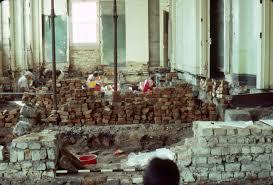

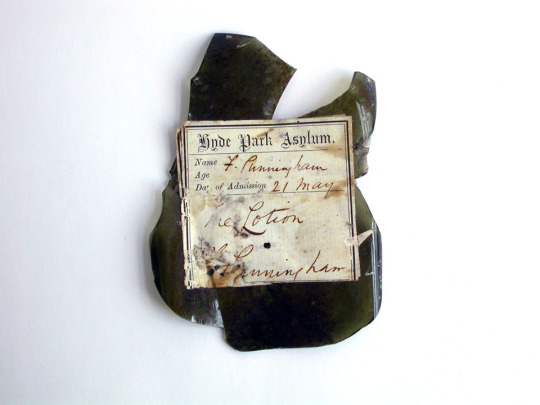
5. Notch Point, Western Australia (Multicultural heritage)
Notch Point is a site of varied and mixed archaeology, ranging from pre- and post- colonial period Aboriginal heritage, to diverse 19th century occupation of the region by Chinese, European, Malay, and Aboriginal peoples in association with pearling industries off the coast. In addition to this, the point is located on Dirk Hartog Island (otherwise known as Wirruwana), the site of the earliest European arrival in Western Australia in 1616, and contains archaeological evidence of both various early Dutch interactions with the island in 1616 and 1697, as well as French arrival in 1772, 1801, and 1818. Notch Point in particular also contains evidence of conflict between the predominantly Chinese population of the pearling industry, with white-Australian and European pearling masters, and pastoral agents. Its not a site that is widely discussed, but provides a fascinating overlay of the amount of varied cultural groups that can be present within Australia’s archaeological sites.
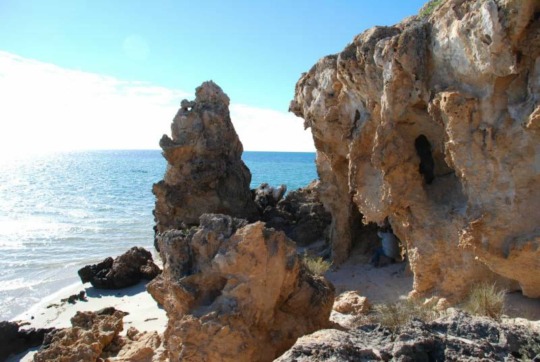
-
-
Honourable mentions to:
Lake Mungo and the Willandra Lakes which should 100% be on this list, but also I feel like I talk about it ALL the time and I wanted to mention sites that I actually don’t see discussed a lot. Theyre super important for cultural reasons, for archaeological reasons, and also for their role the development of archaeology, Aboriginal community consultation, and the role its played in developing repatriation practices in modern Australia. I have multiple posts about them HERE
Budj Bin Eel Traps in Victoria (same reasons, I’ve definitely talked about them before).
Juukan Gorge (and its destruction, im still horrified)
Harrietville Chinese Mining Village
Strangway Strings and The Peake Afghan Cameleer sites
Recherche Bay in Tasmania, and its 1792 French settlement sites
Homebush Mill & Mission Hall in QLD and Beowa National Park sites containing South Sea Islander heritage
#I feel like this constitutes a solid answer#i had fun#and hopefully people learn new things about Australian archaeology#and its diversity#sorry this took literally forever to answer#i got sick for a bit#and then its going to chill in my queue for a couple of days#archaeology#Australia#aboriginal and torres strait islander peoples#they let a mouse do archaeology?#Mice answers things
73 notes
·
View notes
Text

Wrekodara and the Sea Serpent.
Ink, watercolor & colored pencils on paper.
© noxsatvrn
The artwork depicts one scene from Serat Dewaruci, a narrative poem by Yasadipura I, the royal poet of Kasunanan Surakarta based on an even older text, Nawaruci, by a hindu priest Mpu Çiwamurti.
Wrekodara, also known by the name Bhima and Sena is a figure from the Hindu Epic Mahabharata. The 2nd eldest of the five Pandawa born ritualistically through the blessing of Lord Vayu, short-tempered yet kind and compassionate he's the strongest one among his siblings.
In the Pre-islamic Java, Wrekodara was adored by the common folk especially in the agriculture community as he was venerated as the symbol of masculinity and fertility, proven by many archaeological findings of ancient statues depicting Wrekodara. Traditions and myths surrounding Wrekodara persists to this day through the tradition of Wayang Kulit (Javanese shadow puppetry) telling stories about him during harvest festivals in several remote villages as well as the myth about the origin of a sacred spring near Dieng Highlands called Tuk Bima Lukar.
#art#gay artist#ink#watercolor#art nouveau#male muscle#muscle men#hairy male#noxsatvrn#mythology#folklore#paganism#folk religion
389 notes
·
View notes
Text


October 3rd 1594 saw the Battle of Glenlivet, George Gordon, Earl of Huntly, defeated a Royalist force under 7th Earl of Argyll.
The Battle of Glenlivet is significant as an example of the ongoing struggles within Scotland between Presbyterians and Catholics, which colours much of Scotland’s history after the Reformation, and the relentless efforts of the kirk to eliminate the Catholic faith from the country. It also highlights the complex nature of the relationships between Catholic and Protestant powers across Europe at this time. It is also significant as the first battle in the Highlands of Scotland where artillery appears to have played a part in the action, and archaeological evidence of this may well survive on the battlefield.
So was it was an all Scottish affair between the Catholic forces of George Gordon, 1st marquess of Huntly, and Frances Hay, 9th earl of Erroll, and the Protestant army of Archibald Campbell, 7th earl of Argyll., loyal to James VI.
Two years before Glenlivet, Huntly´s relationship with the King had been on a good footing, when he received a commission to apprehend James Stewart, the ´bonny´ Earl of Moray, and bring him to trial. However, Huntly was responsible for Moray´s death at Donibristle, in Fife, slashing him across the face with his sword and eliciting, allegedly, these last words from Moray; “Ye hae spoilt a better face than yer ain.”
Two years later, in 1594, Huntly was a ´Catholic rebel´. The perceived danger to Scotland was the distinct possibility of foreign support for the disenfranchised Catholics, through the intervention of Philip II of Spain. The decree of the 12th of November, 1593, by which Catholics were ordered to give up their faith or leave the Scotland, contributed to significant unrest and Huntly refused to comply.
The earls of Argyll and Atholl were commissioned with the Lieutenancy of the North to deal with rebel Catholics such as Huntly. This programme of suppression escalated into a campaign, led by Argyll, against Huntly and other rebel lords and clan allies. The two sides encountered one another on a hillside near Ben Rinnes, where Huntly had laid an ambush for Argyll as he climbed the hill. In the battle Huntly used his horse to great effect in the confined space of a pass and entirely routed Argyll´s troops. The king´s forces were unable to withstand the cavalry lances and were driven off the hill. During that panic-stricken retreat, they are said to have thrown their weapons into a small lochan, which became known as ´The Loch of the Swords´. According to one tradition a weeping Argyll was led from the field.
19 notes
·
View notes
Text
Bothan: Beehive Shieling Dwellings in Harris and Lewis
By Cathy Dagg The following are some musings based on recent visits to some of the shieling structures of North Harris and South Lewis, unusually different from those in the mainland Highlands. There’s no original research involved and I am relying heavily on the notes and plans of previous archaeologists and amateurs who have also been intrigued by these structures. Some background on shieling…

View On WordPress
#airigh#Airigh a&039;Sguair#beehive dwellings#beehive structures#Both a&039; Chlair Bhig#bothan#Captain FWL Thomas#cupboard niche#dairy stores#Fraser Darling#Gearraidh Ascleit#Gearraidh Coire Geurad#Harris archaeology#highland archaeology#Highland Folk Museum#illicit still#Lewis archaeology#Marc Calhoun#Post Medieval archaeology#shielings#Society of Antiquaries of Scotland#St Kilda#tigh earraich#Uig parish
0 notes
Text
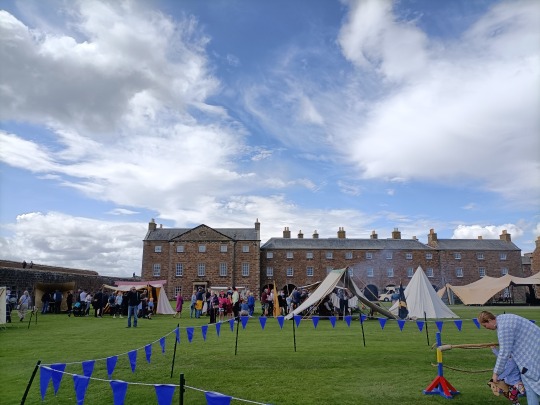

𝙃𝙄𝙂𝙃𝙇𝘼𝙉𝘿𝙎 (𝙎𝘾𝙊𝙏𝙇𝘼𝙉𝘿)
#scottish highlands#highlands#scotland#scottish#ancient history#architecture#archaeology#photography#photoshoot#aesthetics#history#art#aestethic#classical art#classics#ancient rome#roman empire#roman#rome#roma#battle
9 notes
·
View notes
Text
Preliminaries: War of the Utility Wares!
Most pottery you find in archaeological sites isn't painted. Most pottery is unslipped, undecorated utility ware - with the assumption that "utility" typically here means "cooking over a fire." Sometimes grain storage. Usually cooking, though.
It doesn't mean they can't be beautiful in their own right. And one of my friends is working on a dissertation which among other things argues that "surface treatments" like incising and corrugation should be considered "decoration" too, when usually in archaeology "decorated" means "painted." There were lots and lots and lots of types of utility wares. Some were plain. Some were gorgeous.
So this is a Preliminary Round - four different styles traditionally called utility ware will go up against each other... only two will move on to represent utility wares in the final bracket.
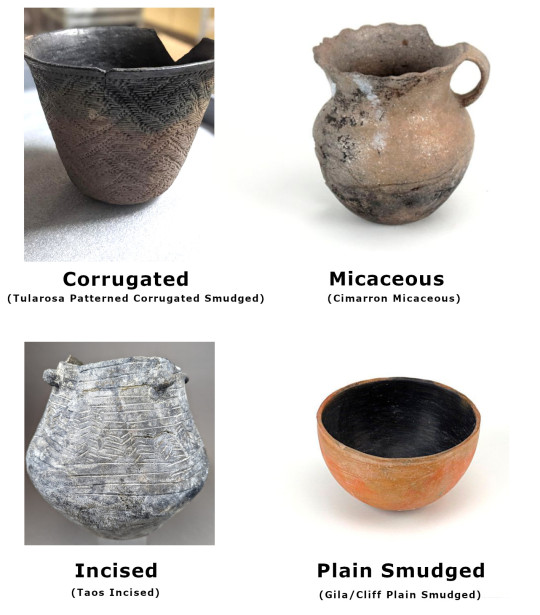
Vote for your favorite: More information about each is under the cut:
Corrugated
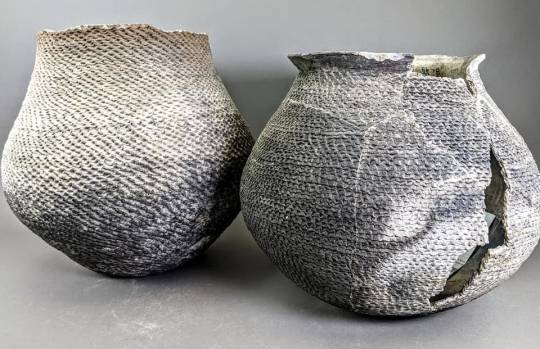
Mesa Verde Corrugated jars. Southern Colorado, AD 1100-1300.
There are SO many different types of corrugated pottery; if I listed them all we'd be here all day. However, they all have commonalities: They were primarily (though not exclusively) made in the Mogollon cultural region, primarily (though not exclusively) plain and unpainted, and primarily (though not exclusively) used for cooking.
In this region, potters don't use pottery wheels. Pots are hand-built, typically from coil-building: using many thin coils to build up the shape of the pot. For most pots, those coils are scraped smooth as they're still wet. But for corrugated pots, those coils are only scraped smooth on the inside. The outside coils are instead pressed using a tool or the potter's thumb to make a patterned, scaled, or woven texture. Corrugation, due to its association with cooking pots, is not typically considered "decoration" by archaeologists, but it creates beautiful and captivating patterns.
Micaceous
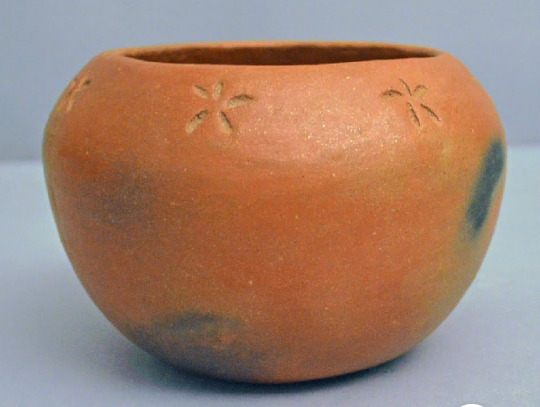
Micaceous Bowl with Etched Flowers. Made by Virginia Romero (Taos Pueblo, 1896-1998).
In northern New Mexico, there are golden-red clays with a lot of sparkly mica in them. The mica self-tempers the clay, and creates a lovely shimmering effect when you see the pots in person. There's evidence of polished micaceous pottery being made as early as the 1300s, but it really took off as a popular type of cooking ware in the 1500s-1600s. In this time, it was made primarily by norther Pueblos like Taos, Picuris, and Nambe, but was enthusiastically adopted by the Jicarilla Apache as well, who have strong social ties to those northern Pueblos. Cimarron Micaceous, the handled jar seen above the cut, is a 1600s Apache micaceous pottery style.
Micaceous pottery is still extremely popular with Native potters today. Some of it is as an art form, with many different experiments in structure and style, but some people still swear by cooking in these micaceous clay pots - beans just taste better when cooked in clay instead of metal!
Incised

Taos Incised jar sherd. Northern New Mexico, AD 1050-1300.
Incised ware is SO underappreciated. However I am also biased because for the past three or four summers I have worked on an archaeology project in the Taos area and we find so much of it.
Incised designs are carved into the wet clay. Usually, these are not painted. Incised pottery is very common on the Great Plains, but less so in the Southwest. The Northern Pueblos like Taos and Picuris, however, has long-standing interactions with Plains groups, trading corn and buffalo hides, holding market days together, Picuris and Taos people fleeing the Spanish invasion to live in Kansas with their Apache allies. This is also visible in the sharing of pottery styles in the northern Pueblos, where incised ware is common. Parallel lines that mimic corrugation, chevrons, and herringbone patterns are common.
Plain Smudged
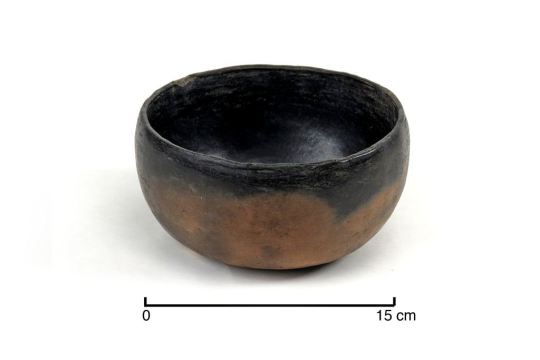
Reserve Plain Smudged, Mogollon Highlands, AD 600-1250.
As I described in my pottery jargon post, "smudging" is a method of getting that shiny black interior during the firing stage. During firing, different levels of oxygen will cause the minerals in the clay to turn different colors. An oxidized environment (high oxygen) turns iron-rich clays red; a recducing atmosphere (restricted oxygen) plus an infusion of carbon turns them black. To smudge a pot, the inside is polished, and then in the firing pit is covered with ash and charcoal. This puts a lot of carbon on the surface, and blocks the oxygen from reaching it. When the pot comes out of the fire, the part that was covered in charcoal will be shiny black. This was another pottery style particularly popular in Mogollon areas.
47 notes
·
View notes
Text
Caral-Supe Civilization
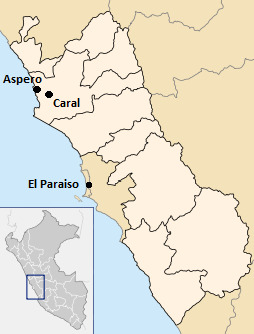
By Ontrvet - Own work, CC BY-SA 3.0, https://commons.wikimedia.org/w/index.php?curid=18736804
The Caral-Supe, also known as the Caral or Norte Chico, are a group of people that lived along the north-central coast of modern-day Peru from 3500-1800 BCE, contemporary to the building of the Egyptian pyramids. They also lived along the Fortaleza, Pativilca, and the Supe rivers. They are considered to be the oldest-known civilization in the Americas, predating cultures like the Olmecs by nearly 2000 years.

By I, KyleThayer, CC BY-SA 3.0, https://commons.wikimedia.org/w/index.php?curid=2441867
Though there was a complex culture, the Caral-Supe people did not leave any ceramics or evidence of other visual arts behind. They did grow cotton with irrigation, which was a very important crop for clothing and nets as their animal protein sources were marine, even among those who lived inland. This reliance on marine protein sources lead to the hypothesis called the "Maritime Foundations of Andean Civilizations' hypothesis (MFAC), in which the culture began on the coast and then moved inland to find and then cultivate cotton to support those on the coast.
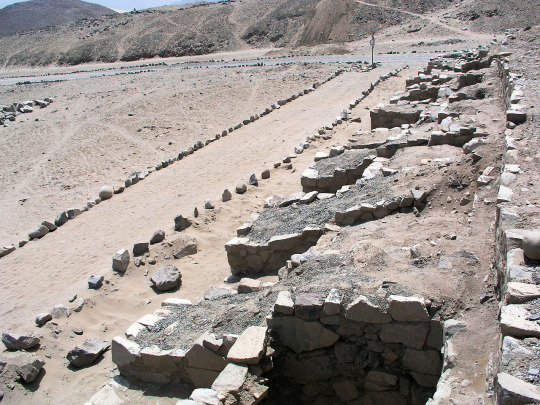
By I, Xauxa, CC BY 2.5, https://commons.wikimedia.org/w/index.php?curid=2503267
In addition to maritime protein, the Caral-Supe people also ate squash, beans, guava, and sweet potato, adding avocado and achira in northern areas. More recent studies also show that maize was also grown. Prior to about 2013, it was thought that the Caral-Supe didn't have a staple food that they grew. According to Evidence for maize (Zea mays) in the Late Archaic (3000–1800 B.C.) in the Norte Chico region of Peru published in 2013, 'New data drawn from coprolites, pollen records, and stone tool residues, combined with 126 radiocarbon dates, demonstrate that maize was widely grown, intensively processed, and constituted a primary component of the diet throughout the period from 3000 to 1800 BC.'
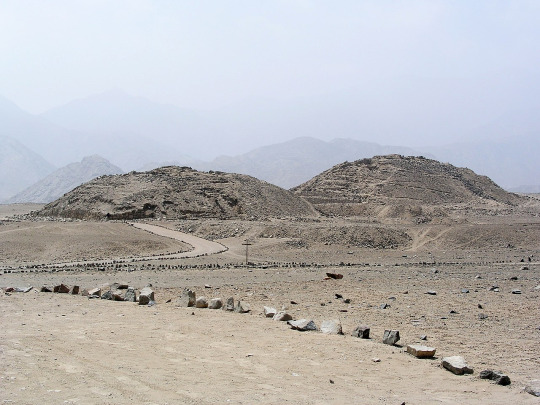
By I, Xauxa, CC BY 2.5, https://commons.wikimedia.org/w/index.php?curid=222037
Without an artistic or written record, it's difficult to know a lot about the Caral-Supe culture. They did leave behind a vast wealth of buildings, including large pyramids. They also built settlements close together, making it perhaps the most densely populated area area during the 3rd millennium BCE, with the possible exception of Northern China. Quipu have been found, though exactly how or why they were used is uncertain, as it is with later Andean civilizations.

Credit: Caral Archaeological Zone – Ministry of Culture of Peru
Efforts have been made to extrapolate what type of government the Caral-Supe people had, including the economy, ideology, and physical bases of power would have been. Evidence for a central government include some of the structures being built in one or two large pushes and large warehouses left behind. Other economic evidence include the trade relationships between the inland and maritime groups as well as those living else where as evidenced by 'Caral] exported its own products and those of Aspero to distant communities in exchange for exotic imports: Spondylus shells from the coast of Ecuador, rich dyes from the Andean highlands, hallucinogenic snuff from the Amazon.'

source: https://www.ancient-origins.net/ancient-places-americas/unique-artifacts-shed-light-daily-life-5000-year-old-city-caral-002019
The ideology is harder to pin down because they didn't decorate their buildings. A gourd was found with what appears to be the Staff God, a depiction of a human-like figure holding instruments of power, this one being 'a leering figure with a hood and fangs' and it is the oldest such depiction. As this type of depiction is common among other pre-Colombian Andean societies, it is thought that access to deities and the supernatural was a part of the purpose of government.

By I, Xauxa, CC BY 2.5, https://commons.wikimedia.org/w/index.php?curid=2488467
Physical evidence includes a lack of damage due to warfare, including a lack of bodies that were injured in warfare, nor are there walls around the settlements. The complexity of Caral-Supe culture without the evidence of warfare or need for defense driving kin groups into larger societies is unique among those ancient societies that have been studied. Most complex cultures came about as a way to defend against others.
Further Reading:
Pyramidal structure unearthed in Chupacigarro, Peru
11 notes
·
View notes
Text
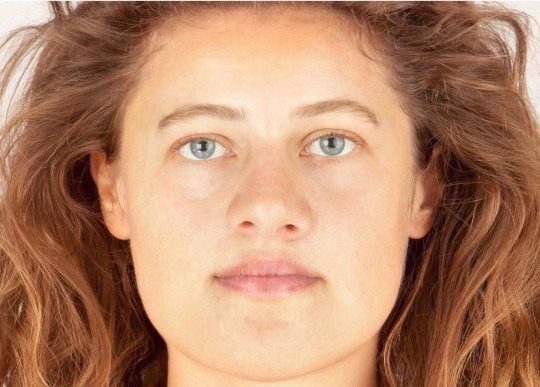
Facial reconstruction of Eva, also referred to as Ava, she was a Bronze Age woman whose remains were discovered in a rock-cut tomb at Achavanich, in the Scottish Highlands. Her burial site and subsequent studies have provided invaluable insights into life in Britain over 4,000 years ago. She is believed to have lived around 4,250 years ago during the early part of the Bronze Age, a period marked by significant advancements in technology, particularly metalworking.
Discovery of Eva
Eva's burial site was found in 1987 at Achavanich, a horseshoe-shaped arrangement of standing stones in Caithness, Scotland. Her remains were discovered in a rock-cut pit that had been carefully prepared, a sign of her community's respect for her. The tomb contained skeletal remains along with grave goods, such as distinctive Beaker pottery, which is associated with the Bell Beaker culture.
Eva was part of the Bell Beaker culture, a widespread archaeological culture known for its characteristic pottery and metalwork, particularly copper and bronze tools. This culture spread across much of Europe, bringing technological and cultural innovations. Bell Beaker communities were also known for their distinctive burial practices, which often involved individual graves with grave goods that reflected the deceased's status and role in the community.
In 2016, Eva's remains underwent extensive analysis, which provided a deeper understanding of her life and times. Isotopic analysis of her teeth suggested that she consumed a diet typical of the region, which included local plants, animals, and possibly some marine resources. DNA analysis indicated her ancestry was primarily from the Neolithic farming populations of Europe, with some genetic contributions from incoming Bell Beaker migrants.
One of the most compelling outcomes of the research was the facial reconstruction of Eva. Using her skull as a foundation, experts created a digital reconstruction that offers a glimpse into her appearance. She likely had light skin and dark hair, features consistent with other individuals from the Bell Beaker period in Britain.
Eva's skeletal remains revealed she was a young adult at the time of her death, possibly in her late teens or early twenties. There were no clear signs of disease or trauma, so the cause of her death remains unknown. Her burial in a carefully prepared grave, along with grave goods, indicates she may have held a significant role or status within her community.
The area of Achavanich is itself an intriguing archaeological site. The arrangement of stones and the presence of Eva's grave suggest that the location held ceremonial or social importance. The Bell Beaker people are known to have constructed and used such sites for rituals, gatherings, and burials.
Eva’s story is a testament to the rich history of the Scottish Highlands and the interconnectedness of prehistoric European cultures. Her discovery continues to provide insights into the lives of Bronze Age communities and their practices, shaping our understanding of this fascinating period in human history.
Source: Facebook
Celt
4 notes
·
View notes
Text
What is your favourite Doctor Who story?


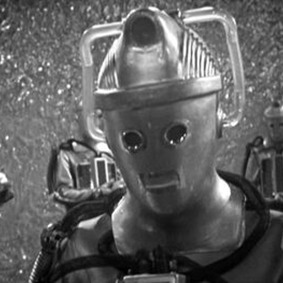

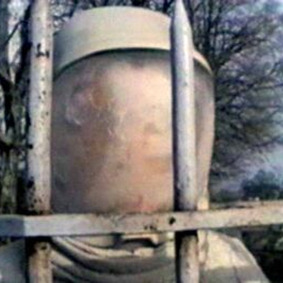


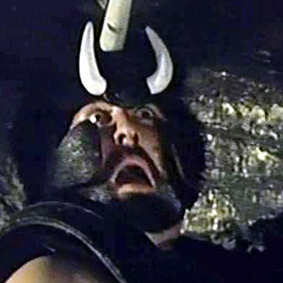

Spearhead from Space tied with the Ark in Space, and The Mind of Evil tied with Frontier in Space. Everything from day 4 has been given a second chance across two tiebreak groups
ROUND 2 MASTERPOST
synopses and propaganda under the cut
The Highlanders
Synopsis
The time travellers arrive in Scotland just after the Battle of Culloden. The Second Doctor gains the trust of a small band of fleeing Jacobites by offering to tend to their wounded Laird, Colin McLaren. While Polly and the Laird's daughter, Kirsty, are away fetching water, he and the others are all captured by Redcoat troops commanded by Lieutenant Algernon Ffinch.
Propaganda no propaganda submitted
The Faceless Ones
Synopsis
The TARDIS arrives at Gatwick Airport in July 1966. A great many young people have vanished, including Ben and Polly. With the help of Samantha Briggs, the sister of one of the missing youths, the Second Doctor and Jamie must uncover the plot of the Chameleons.
Propaganda no propaganda submitted
Tomb of the Cybermen
Synopsis
The TARDIS arrives on the planet Telos, where an Earth archaeological expedition led by Professor Parry is trying to uncover the lost tombs of the Cybermen. With a lot of help from the Doctor, the archaeologists enter the tombs. There, one of the party, Klieg, reveals himself and his business partner, Kaftan, to be planning to revive the Cybermen.
Propaganda no propaganda submitted
Spearhead from Space
Synopsis
Forbidden to continue travelling the universe by his own people, the Time Lords, and exiled to Earth in the late 20th century, the newly regenerated Doctor arrives in Oxley Woods accompanied by a shower of mysterious meteorites. Investigating the occurrence is the United Nations Intelligence Taskforce (UNIT for short), an organisation which had previously been associated with the Doctor during the Cybermen's invasion.
Propaganda no propaganda submitted
The Ambassadors of Death
Synopsis
The Third Doctor joins UNIT's investigation of the mystery surrounding Mars Probe 7. Space Control, headed by Professor Ralph Cornish, has had no contact with the astronauts on board since it started back from Mars seven months ago. Now the Recovery 7 rescue mission has run into similar difficulties.
Propaganda no propaganda submitted
Frontier in Space
Synopsis
The Third Doctor and Jo are caught in the escalating tension between planets Earth and Draconia and discover that the Master and the Daleks are secretly working to provoke the two into all-out war.
Propaganda no propaganda submitted
Invasion of the Dinosaurs
Synopsis
The Third Doctor and Sarah arrive in 1970s London to find it has been evacuated because dinosaurs have appeared mysteriously. As the line between friends and enemies wavers, the Doctor soon discovers the dinosaurs are being brought to London via a time machine to further a plan to revert Earth back to a pre-technological "Golden Age"...
Propaganda no propaganda submitted
The Monster of Peladon
Synopsis
The Doctor returns to Peladon, fifty years after his last visit, to find Queen Thalira, daughter of the late King Peladon, on the throne. A tense labour dispute between the Pel nobility and miners is worsened when apparitions of their deity Aggedor attack and kill several miners. The Galactic Federation desperately needs trisilicate for its war against Galaxy 5 and sends in brutal Ice Warrior troopers to ensure production. The Doctor soon discovers a devious plot at the heart of Aggedor's appearances...
Propaganda no propaganda submitted
The Seeds of Doom
Synopsis
The TARDIS lands in a space museum on Earth in the late 21st century, where the Second Doctor, Jamie and Zoe learn that contact has been lost between Earth and the Moon. In this era, instant travel — T-Mat — has revolutionised the Earth. Its people have lost interest in space travel. The Doctor and his companions travel to the Moon in an old-style rocket and reach the Moonbase, control centre for T-Mat, only to find a squad of Ice Warriors have commandeered the base and plan to use the T-Mat network to their advantage.
Propaganda no propaganda submitted
26 notes
·
View notes